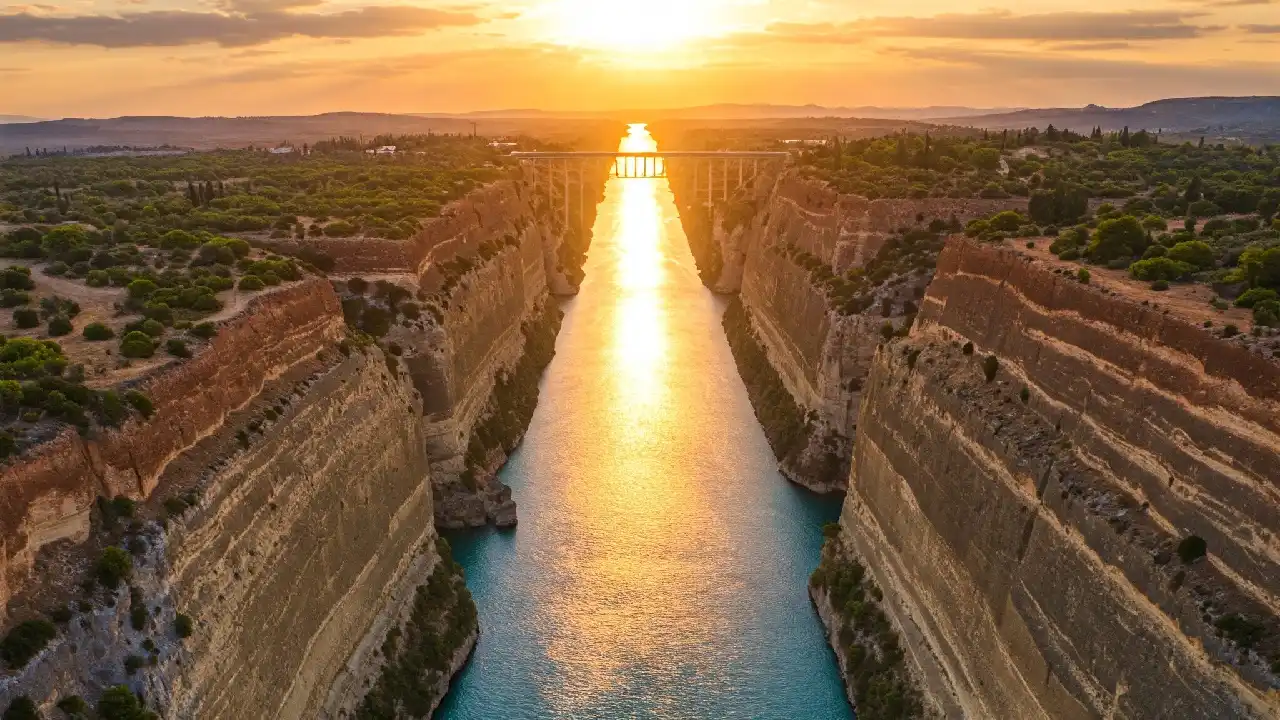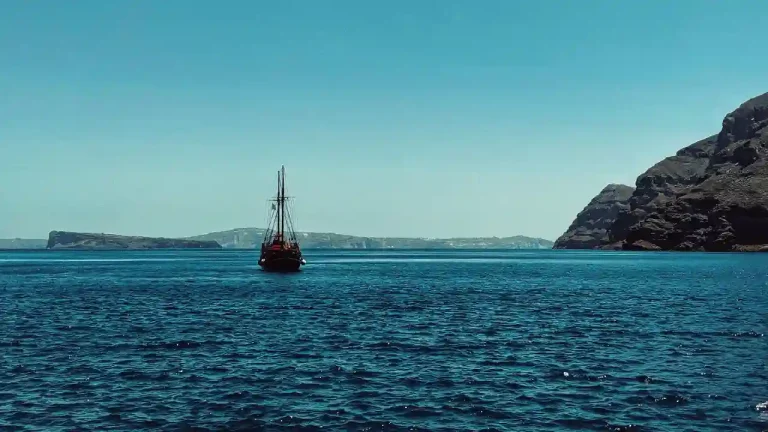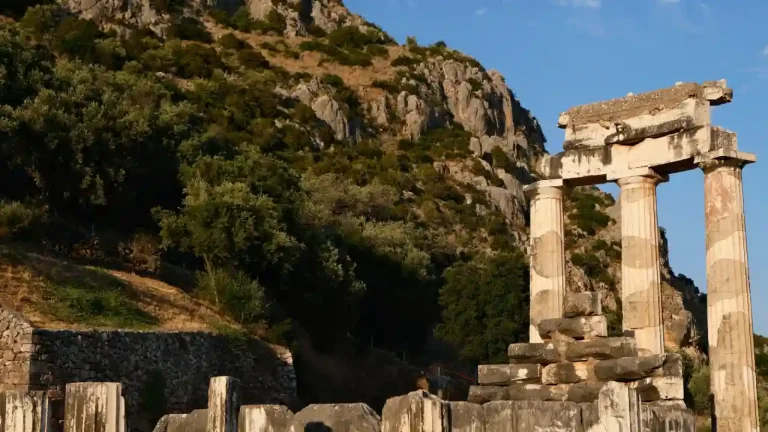Corinth Canal: A Spectacular Greek Wonder
A Traveler’s Guide to the Corinth Canal
Introduction
The Corinth Canal is one of the most breathtaking man-made wonders in Greece. This historic canal, carved through solid rock, serves as a narrow passageway connecting the Aegean Sea with the Ionian Sea, significantly shortening travel time for ships navigating between the two bodies of water. However, its significance extends beyond maritime convenience. Tourists from around the world flock to this engineering masterpiece to marvel at its sheer depth, vertical cliffs, and strategic importance.
Whether you are drawn to its history, spectacular views, or thrilling activities like bungee jumping, the Corinth Canal is a must-visit destination in Greece. This guide will cover everything you need to know about visiting, from historical insights to practical travel tips.
Where is the Corinth Canal?
The Corinth Canal is located in southern Greece, dividing the Peloponnese Peninsula from the Greek mainland. It is about 80 kilometers (50 miles) west of Athens, making it an easily accessible day-trip destination for travelers staying in the Greek capital. The nearest town is Corinth, which serves as a great starting point for exploring the area.
How to Get to the Corinth Canal
- By Car: The drive from Athens to the Corinth Canal takes about 1 hour via the Athens-Corinth National Road (E94).
- By Train: Take a suburban train from Athens to Corinth, then a short taxi ride to the canal.
- By Bus: Several KTEL buses connect Athens with Corinth, from where you can take a taxi to the canal.
- By Cruise: Some Aegean cruises pass through the canal, offering a unique water-based experience.
A Brief History of the Corinth Canal
The idea of cutting a canal through the Isthmus of Corinth dates back to ancient Greece. In 602 BC, the tyrant Periander envisioned a waterway to save ships from the dangerous voyage around the Peloponnese. However, due to technological and engineering limitations, his plan never materialized. Instead, a paved ship trackway (Diolkos) was built to transport ships overland.
It wasn’t until the 19th century that the canal became a reality. Inspired by the Suez Canal, construction of the Corinth Canal began in 1881 under the direction of Hungarian engineers István Türr and Béla Gerster. After many financial and technical difficulties, the project was finally completed in 1893.
Key Facts About the Corinth Canal
- Length: 6.4 kilometers (4 miles)
- Width: 24.6 meters (81 feet) at its widest point
- Depth: Up to 8 meters (26 feet)
- Maximum Ship Size: Small vessels and private yachts
How Do I See the Corinth Canal?
Best Viewpoints for Tourists
- The Bridges: The two main bridges (Poseidonia and Isthmia) offer incredible views. You can even watch ships pass below.
- Submersible Bridge at Isthmia: This unique bridge sinks underwater when ships need to pass through.
- View from a Boat: Several boat tours allow visitors to sail through the narrow passage.
- Aerial View: If you’re feeling adventurous, try a helicopter tour for a stunning bird’s-eye perspective.
What to Do at the Corinth Canal?
Beyond sightseeing, the canal offers plenty of exciting activities:
- Bungee Jumping: Adrenaline lovers can take a leap from the 78-meter-high bridge.
- Boat Tours: Join a guided cruise through the canal to experience its towering cliffs up close.
- Hiking & Walking Trails: Several paths around the canal provide fantastic photo opportunities.
- Visit Ancient Corinth: Just a few kilometers away, the ruins of Ancient Corinth, including the Temple of Apollo, are worth exploring.
Corinth Canal Entrance Fee & Costs
- Walking across the bridge: Free
- Boat tour through the canal: €25–€50 per person, depending on the tour operator
- Bungee Jumping: Around €80–€100
- Parking: Free near the bridges
Corinth Canal at Night
The Corinth Canal at night offers a completely different experience. While it isn’t heavily illuminated, the soft lighting on the cliffs creates an enchanting atmosphere. Some boat tours operate in the evening, allowing visitors to witness the canal under the moonlight. For the best nighttime views, visit the Poseidonia Bridge, where you can watch the tranquil waters reflect the stars.
Can You Swim in the Corinth Canal?
Swimming in the Corinth Canal is strictly prohibited. The canal is an active waterway with strong currents and a narrow passage. However, there are many beautiful beaches nearby, such as Loutraki Beach and Kalamaki Beach, where visitors can swim in the crystal-clear waters of the Saronic Gulf.
FAQs
Is the Corinth Canal still used today?
Yes, though it primarily serves small commercial ships, private yachts, and tourist cruises.
When is the best time to visit the Corinth Canal?
Spring (April–June) and autumn (September–October) offer pleasant weather and fewer crowds.
Are there restaurants near the Corinth Canal?
Yes, several tavernas and cafés nearby serve delicious Greek cuisine, including seafood and souvlaki.
How long does it take to see the Corinth Canal?
A quick stop for photos takes about 30 minutes, while a boat tour or bungee jumping can take 1–2 hours.
Can I cross the Corinth Canal on foot?
Yes, pedestrians can walk across the Poseidonia and Isthmia bridges for panoramic views.
Is the Corinth Canal wheelchair accessible?
Yes, the main viewpoints and bridges have wheelchair access, but boat tours may have limitations.
Conclusion
The Corinth Canal is a must-visit destination in Greece, offering a mix of history, engineering brilliance, and stunning natural beauty. Whether you’re a history buff, adventure seeker, or photographer, this marvel promises an unforgettable experience. Make sure to plan your visit, enjoy the best views, and take part in exciting activities that make this attraction truly special.








